Susan Horton, DVM
So many of the health problems we see with turtles and tortoise are related to improper environment or feeding. Please research your specific breed’s requirements carefully. I recommend UVB light for all turtles and tortoises.
Pictured here are some problems I see in practice. If you recognize one of these problems in your turtle or tortoise , set up an appointment with us today!
Infection
Pictured below is redness found around the edges of the shell and where the skin and shell meet. This is a sign of severe infection.
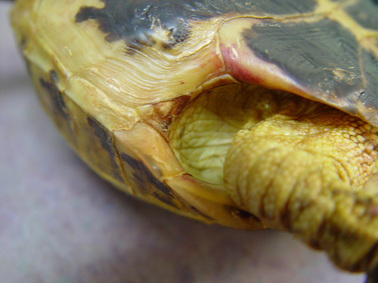
Severe infection around shell edges
Aural (Ear) Abscess
Pictured below is one of the more common problems I see. It is an aural (ear) abscess. These can form from either infection, vitamin A deficiency, or both. Fixing the problem involves correcting the diet, treating the infection, and removing the caseation (puss) in the ear canal.

Aural (ear) abscess

Aural (ear) abscess
With anesthesia and proper pain control (analgesia) the caseation is removed. The turtles pictured below and above made full recoveries.


Prolapsed Hemipenes
Pictured below are a variety of prolapsed hemipenes. The hemipene is a copulatory locking organ for reproduction found in the male. In turtles and tortoises, it does not contain the urethra. The prolapse can happen for several reasons ranging from MBD, trauma, infection, to cancer. Most of these prolapses can be completely fixed if they come into the hospital as soon as it happens. If to much time passes, as with the second picture, amputation is the only cure.
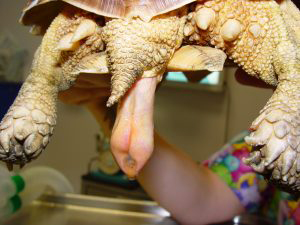
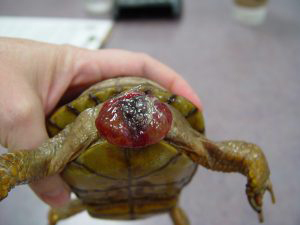
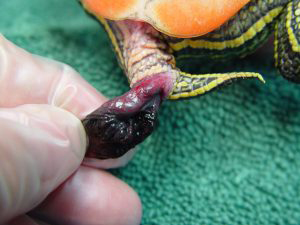
Fluid Under the Skin
Pictured below is a turtle with a pocket of fluid under the skin. We call this edema. This is what a burn can look like in a turtle that has come into contact with something hot. In this case, the turtle’s enclosure was placed outside in the sun, and most of the water had evaporated. The floor of the enclosure became to hot.
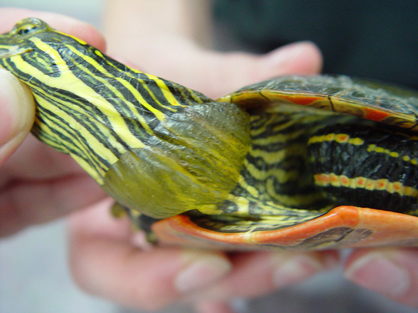
Fluid Under Skin
Shell Damage
Turtles and tortoises should always be protected from the family dog or any other outside predators, no matter how big the tortoise is. This poor fellow was attacked by the family dog. See Happy Turtle Stories for shell repair examples.

Tortoise Herpes
We’ve seen a lot of Tortoise Herpes virus lately. The Mediterranean tortoises seem most susceptible, but it can appear in many species. There is good medicine if it is caught early on. Pictured below is a Sulcata with tortoise herpes. The classic sign is white plaques in the oral cavity. It is only contagious to turtles, people need not worry about themselves.

Tortoise Herpes
Critical Care
Critically ill turtles may need to stay in the hospital. Pictured below is a turtle with a feeding tube placed in his esophagus. This tube is helpful when medicine and feeding will be needed for a long time.
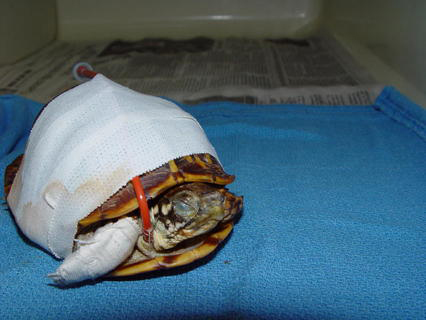
Feeding tube
If you have any questions, please feel free to call us at (502) 241-4117.

